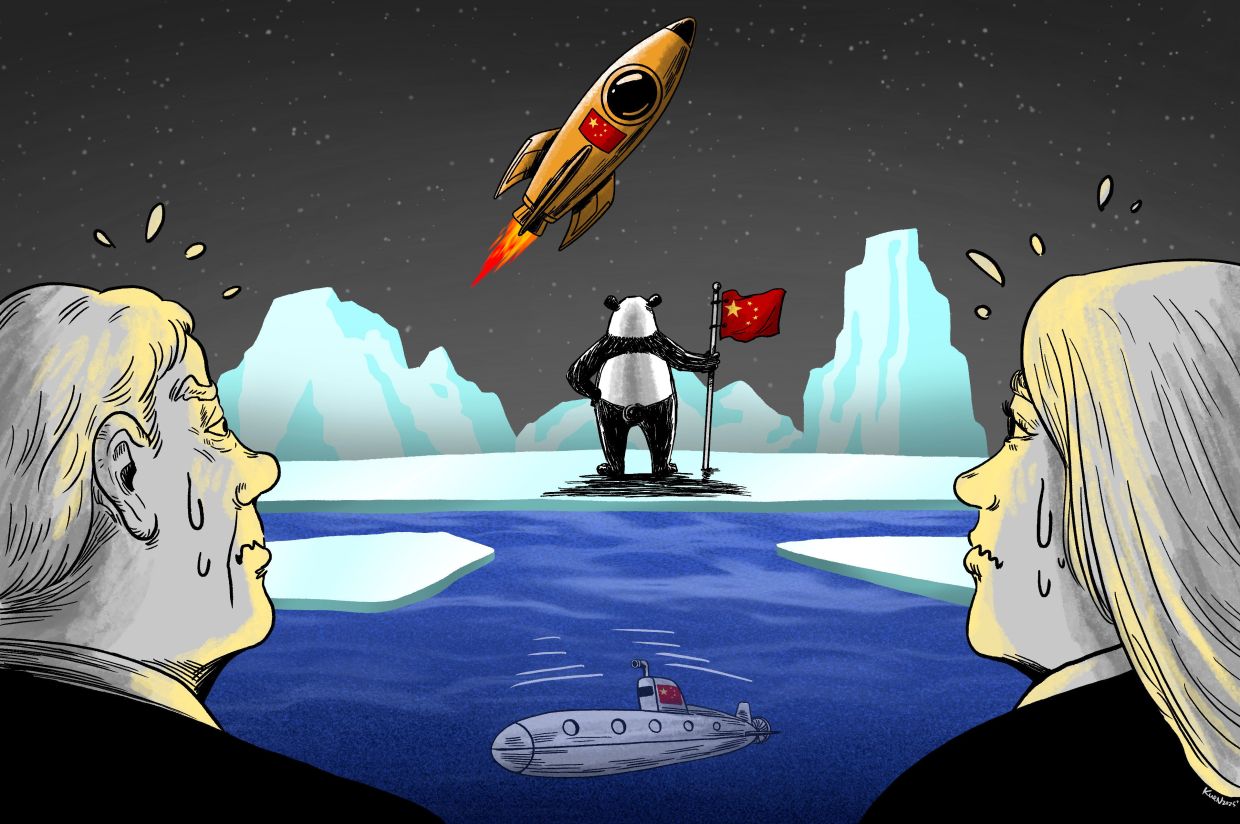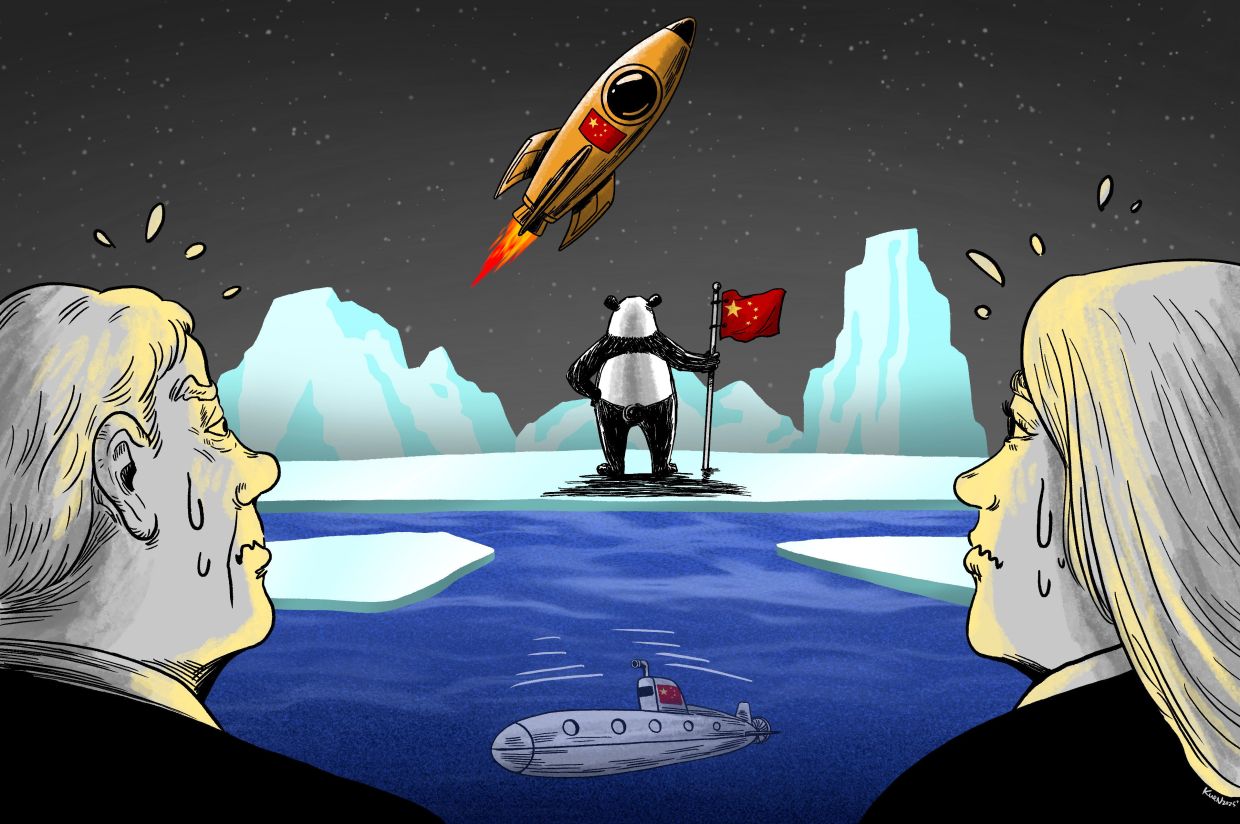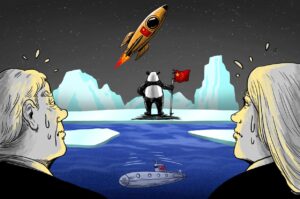
In 2003, a decade after the humiliation of the Yinhe incident – when a Chinese container ship was left stranded for weeks after the United States jammed its Global Positioning System (GPS) – Beijing set its sights on bypassing the American satellite network.
At first, it turned to the European Union, pledging €230mil (then US$260 million) to join the Galileo project, an independent satellite navigation system designed to reduce Europe’s reliance on GPS.
But the partnership did not last. Four years later, China was marginalised from full participation in Galileo amid European security concerns and the collapse of the project’s financing model, according to The New York Times.
China responded by developing its own network: BeiDou, a constellation of 64 satellites that is now the country’s dominant navigation system and is used to track locations over 1 trillion times per day.
That journey from exclusion to autonomy reflects a broader national drive: China‘s determination to safeguard its national security by mastering critical technologies once controlled by others.
This objective is pushing China to rapidly expand its presence in a host of new frontiers: from the ocean floor to the Arctic Circle and into outer space. But it is also generating fresh tensions with the West, which is eyeing China’s moves warily.
Beijing’s ambitions have steadily risen. In its 14th five-year plan, which covers 2021 to 2025, China identified deep-sea exploration and aerospace technology as vital to national security and called for “forward-looking and strategic” projects in these areas. It also proposed the construction of an “ice Silk Road” to strengthen China’s polar presence.
Newly released proposals for the 15th five-year plan, which covers 2026 to 2030, go further. China now aims to cement its status as a “major space power” while also bolstering its capabilities in other arenas deemed essential to national security, including the deep sea, polar regions and low-altitude airspace.
The bolder language underscores Beijing’s growing confidence in its ability to become a global leader in space exploration. Li Hanming, a US-based aviation analyst, said China’s space technology was now among the most advanced in the world.
“China’s space technology is at the same level as other leading players, such as the European Union, United States or Russia,” he said.
The BeiDou network has joined the US’ GPS, Russia’s Glonass and Europe’s Galileo as one of four global satellite navigation systems, while China’s Tiangong space station “operates as a counterpart to the International Space Station”, Li added.
Momentum is also building in China’s commercial space sector. The private Chinese aerospace firm LandSpace is conducting final tests on the country’s first carrier rocket featuring a reusable first stage – a breakthrough that would enable China to conduct launches more frequently and at lower cost.
The prospect of China mastering reusable rockets – a technology pioneered by the US’ SpaceX – has attracted attention on both sides of the Pacific. In a report released in October, Orient Securities said it would allow China to accelerate its deployment of low-orbit satellites.
China is developing several low-orbit constellations similar to SpaceX’s Starlink satellite internet system. The leading programme, known as Qianfan, currently has about 90 satellites in orbit – a far cry from Starlink’s estimated 7,800 – but it aims to rapidly scale up deployments, with a goal of reaching 15,000 by 2030.
Washington is watching China’s progress closely. In September, Brigadier General Brian Sidari, deputy chief of space operations for intelligence at the US Space Force, said it would be “concerning once they figure out that reusable lift”, as it would allow China to follow the US’ lead in creating vast satellite constellations.
Ultimately, the US worries the Chinese military will become capable of deploying cutting-edge satellite technology on the battlefield, allowing it to better coordinate joint operations.
“They’ve seen how the mega-constellations provide that capability to the US Joint Force and the West,” added Sidari, who was speaking at the Air & Space Forces Association’s annual conference.
Similar unease is spreading in Europe as China makes strides in another arena: the polar regions.
In October, China announced its polar research vessel, the Tan Suo San Hao (Explorer Three), had completed its latest mission in the Arctic Ocean. The feat showed China had become the only nation capable of conducting continuous manned deep-sea dives in the dense ice zones of the Arctic, according to Communist Party newspaper People’s Daily.
The vessel is part of a growing Chinese polar footprint. The country has launched three new icebreakers since 2019 and is constructing more. Several polar research stations have been established. The Jiaolong – China’s 7,000-metre-class manned deep-sea submersible – has now undertaken more than 10 manned dives in the Arctic.
China’s private sector is also playing a part. Founded last year, the Chinese polar cruise operator 66 Degrees Expeditions launched its maiden voyage from Aberdeen in the United Kingdom in May. It has since completed more than 10 trips through Northern Europe and the Arctic, carrying more than 1,500 passengers.
Meanwhile, China continues to build up its naval capabilities. The Chinese navy now operates 52 attack submarines – including nuclear-powered vessels – while also developing unstaffed underwater vehicles, cable-cutting devices and advanced sonar technologies crucial for undersea infrastructure and deep-sea mining.
Some in Europe fear the continent is falling behind. In an October report, the Berlin-based Mercator Institute for China Studies (Merics) warned “China’s footprint in the Arctic and space demands urgent attention”, as it could pose “clear challenges to European interests, security, values and future economic development”.
The Arctic may well hold part of the answer to Europe’s quest to reduce its external resource dependencies
Katja Bego, Chatham House
In the Arctic, Europe is particularly concerned about having to compete with China for access to the region’s large reserves of metals, rare earths, oil and gas – resources that could be vital to the continent’s efforts to diversify its energy and critical minerals supplies.
“The Arctic may well hold part of the answer to Europe’s quest to reduce its external resource dependencies,” said Katja Bego, a senior research fellow at the UK-based policy institute Chatham House, in an October report.
“But Europe has so far been slow to develop these opportunities and investment has been lagging. While some of this hesitation reflects extremely valid concerns … it has helped open the door to actors with fewer scruples, such as China.”
There is also concern in Europe over China’s deepening partnership with Russia on space and Arctic projects. The two countries have accelerated their cooperation efforts in recent years, as both the US and Europe have pulled back from working with China, according to Merics.
In 2017, Beijing and Moscow unveiled plans to jointly build a lunar base, which could become capable of conducting scientific research operations by 2035. In May, the countries announced they would also build a nuclear power plant on the moon to supply energy for the base.
For Brussels, the partnership is concerning not only because it considers Moscow a security threat, but also because the collaboration has proven effective. In the Arctic, especially, Russia brings a lot to the table due to its geographic advantages and experience operating in the region.
“Russia’s contributions in the Arctic and space are substantial, and in many cases complementary to China’s capabilities,” the Merics report said.
For now, optimism remains high in the US and Europe that the West is ahead of China when it comes to developing frontier technologies, according to Charles Austin Jordan, a senior research analyst in Rhodium Group’s China Projects team. But that confidence feels more brittle than before.
“That sentiment is primed to turn very quickly,” he said. “Even moderate progress by China, especially in artificial intelligence or quantum [computing], could quickly ignite severe anxieties.”
Chinese experts, however, said Western anxiety over China’s activities was overblown. They stressed that, for Beijing, investing in these strategic fields was not simply a matter of geopolitical competition; it was more about shoring up national resilience.
Shan Guangcun, a professor at the University of Chinese Academy of Sciences whose research focuses on AI, robotics and smart sensors, said China’s push into space and deep-sea exploration was at least in part motivated by the desire to develop crucial underlying technologies.
“Breaking through in these areas means freeing Beijing from dependence on others in core technologies,” he said.
Beijing had grown fearful of relying on foreign technology after repeated Western efforts to choke off China’s access to strategic technologies, such as advanced chips, Shan suggested.
“Ensuring technological autonomy in key areas such as semiconductors, energy, deep-sea exploration and space has become a cornerstone of national security,” he said.
For Shan, the West perceives China’s rise as a “challenge to the existing system”, as it has long dominated the global technological order. But the concern was only partly justified, he said.
“Some of the West’s anxiety reflects a natural wariness towards shifts in the global balance of power; some of it stems from ideological bias; and some is based on genuine security concerns,” he said. “But to demonise China’s technological development purely as a geopolitical challenge is simplistic and misleading.”
Li, the aviation analyst, echoed this point. The US may see China’s progress in space exploration as a threat “because historically they themselves used space technology as a tool of deterrence,” he said, referring to former US president Ronald Reagan’s Strategic Defence Initiative, often dubbed the “Star Wars” programme. – South China Morning Post






